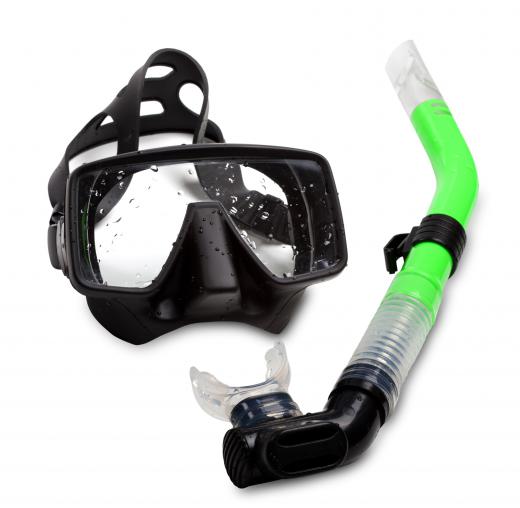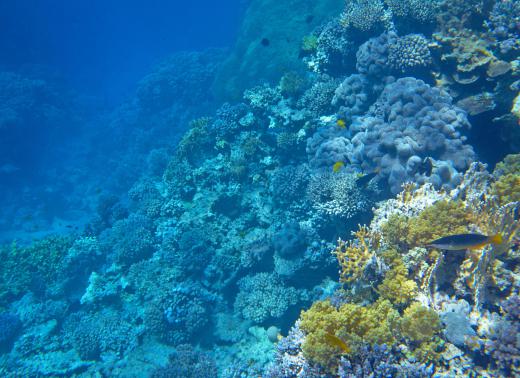Diving gear varies greatly depending on its use. The basics that are essential for diving are fins, dive masks, buoyancy control devices, scuba sets, and snorkels. The gear used will depend on whether the diver is scuba diving, free diving, or snorkeling.
Shallow dives may use a snorkel, which is a shaped tube with a mouthpiece that curves up above the surface of the water so that the diver may breathe while his body and head is underwater. Fins, or flippers, are used in shallow and deep dives. They are vital for underwater propulsion and control and range in price and performance. The more expensive fins are usually used for more professional diving.

A mask is an essential component of diving gear from deep dives to snorkeling because it seals the face so that the diver can see clearly and the eyes don’t get irritated. A full face diving mask also has a mouth piece that connects the diver’s mouth and nose to a source of breathing gas. These masks are primarily for professional diving and also serve to protect the diver from water pollution, cold, and the stings or bites of aquatic plants or animals, such as jellyfish. Also, when diving for long periods of time, a full face diving mask can prevent the discomfort experienced when a diver bites the mouthpiece for too long.

A scuba set is an independent breathing set, meaning the diver is not dependent on a gas line attached to the boat, used in scuba diving. There are two main types of breathing sets used in scuba diving, which are the open-circuit set and the closed or semi-closed set. The closed set, also called a rebreather, processes used air into breathable air again within the device. The rebreather is well suited toward long or deep dives and is more expensive than the open circuit set, so it is usually used for military or research diving and not for sport. In the military, the rebreather is often referred to as CCUBA (Closed Circuit Underwater Breathing Apparatus).

In an open circuit set, the diver breathes air from the tank through the mouthpiece and exhaled air goes into the water without being recycled. Originally tanks were twin-hose, as used by Jacques Cousteau, but today most divers used a single hose set. It is a simpler and cheaper piece of diving gear, and for that reason, more commonly used in recreational dives.

A wetsuit is a protective outfit used in many types of water sports that can be suited for cold water or warm water, which has less thermal protection. Cold water wetsuits are an essential piece of diving gear to prevent hypothermia. The wetsuit traps and uses the body’s heat to warm a thin layer of water kept between the suit and the body that acts as an insulator. For this reason, they should fit snugly so that the water does not escape. Wetsuits also increase a diver’s buoyancy.

A buoyancy control device (BCD), or buoyancy compensator (BC), may also be used on deeper dives. BCs help a diver to float up quickly in an emergency, control ascent and descent, and achieve neutral buoyancy in the water. Neutral buoyancy means that the diver does not rise or fall and keeps constant depth, which often requires BC adjustment due to the heavy equipment the diver is carrying. This diving gear has three main types: wings, stab jackets, and diver’s lifejacket.
